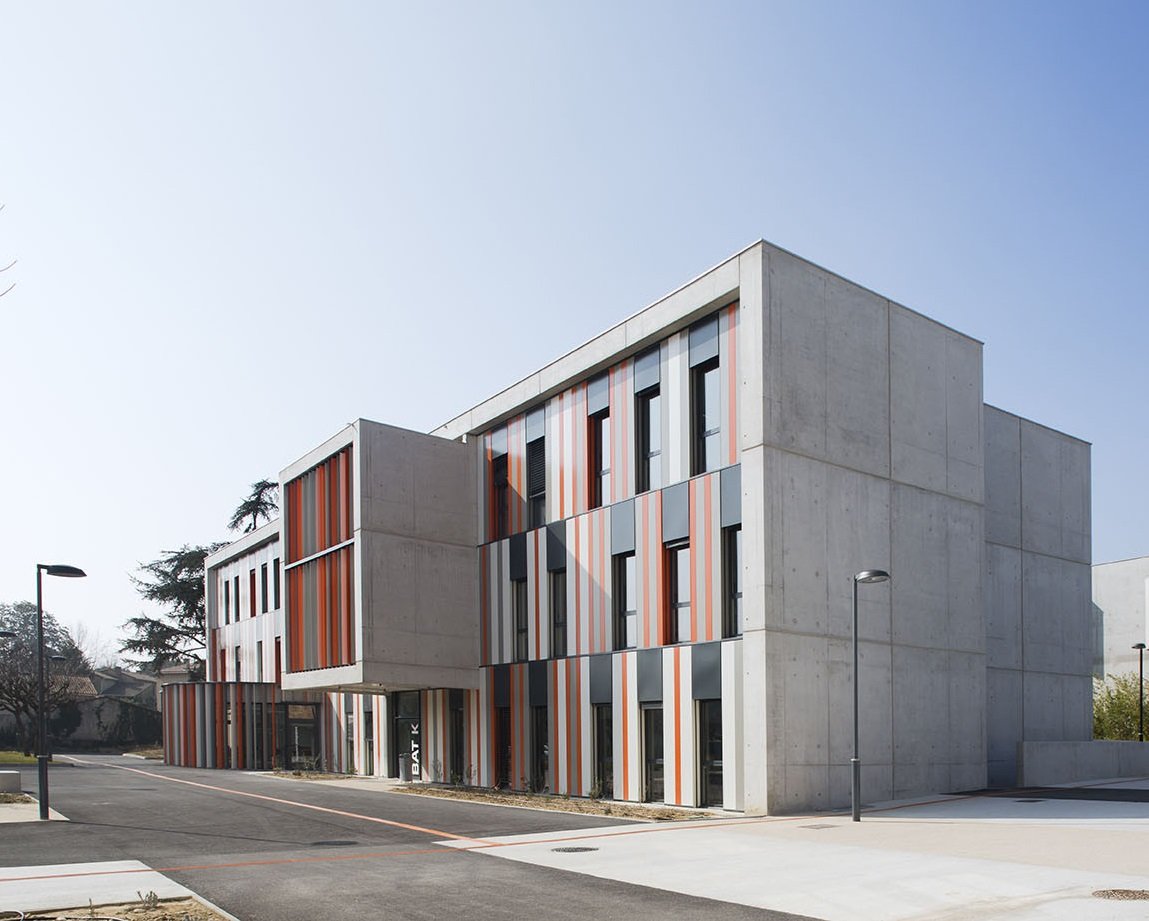#8807. Modern concrete façade with rhythmic color inserts
This modern building is an excellent example of architecture that combines the brutalism of concrete surfaces with a rhythmic composition of colored vertical façade elements. The exterior is based on massive blocks of monolithic concrete with clearly visible formwork texture, creating a sense of reliability and solidity.
Particularly noteworthy is the façade solution with alternating vertical strips of orange, white, and gray colors that break the monotony of concrete walls and give the building a dynamic, contemporary character. These colored panels, likely made of composite materials, contrast with the rough texture of concrete and create an interesting interplay of textures. The window openings are organically integrated into this rhythmic structure and emphasized by dark frames.
The building's architecture has a clear functional zoning expressed in its volumetric-spatial composition. The three-story structure has a stepped form that visually lightens the massiveness of the construction and creates an interesting play of volumes and shadows. The entrance group is designated on the first floor and accentuated by a change in the rhythm of vertical panels.
This approach to façade design can also be used in private housing - combining neutral concrete surfaces with bright vertical accents allows for the creation of a modern but not ostentatious image. Such play with the rhythm of colored panels can visually correct the proportions of a house, while the use of contrasting materials (concrete and composite panels) adds dynamics and textural diversity.
